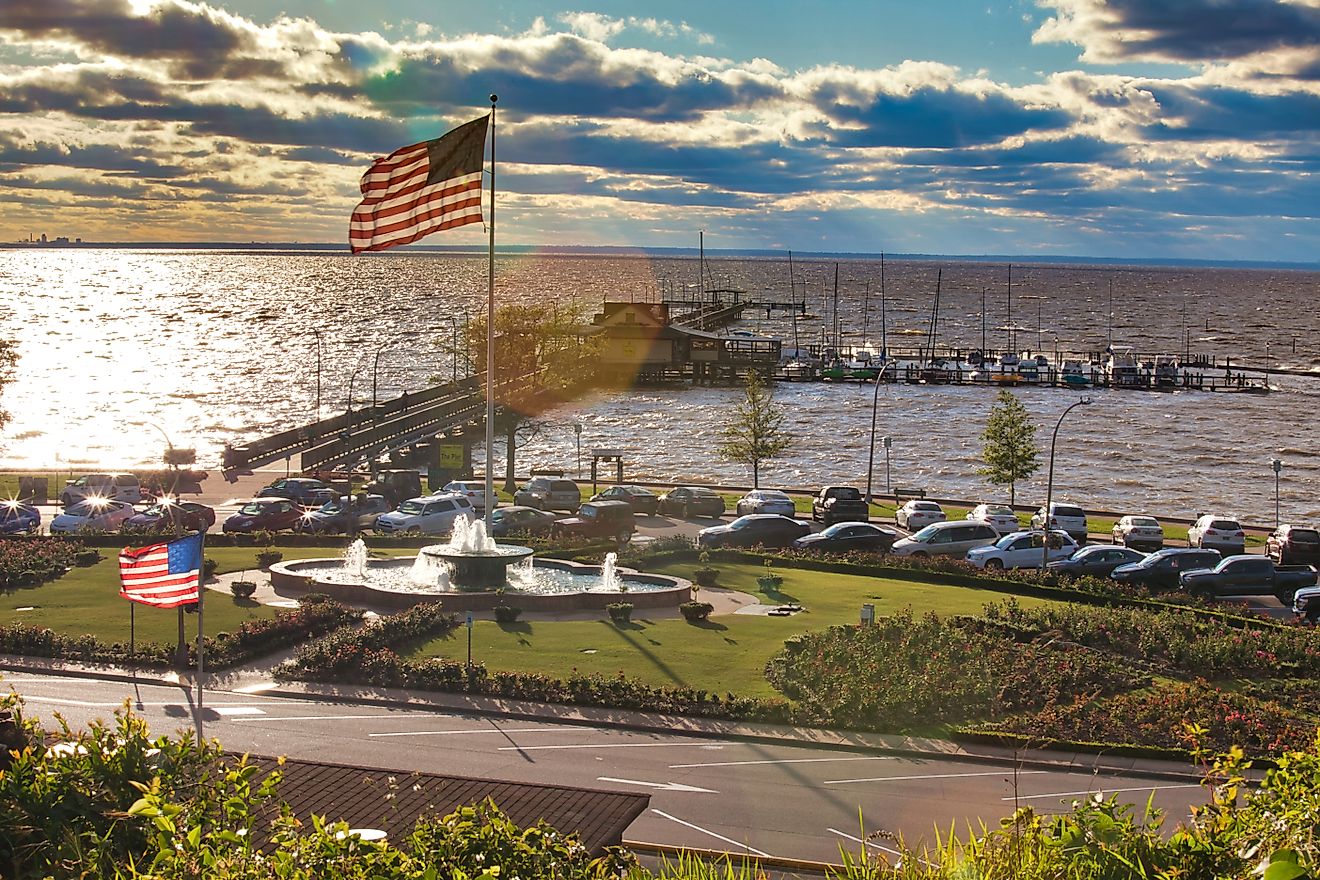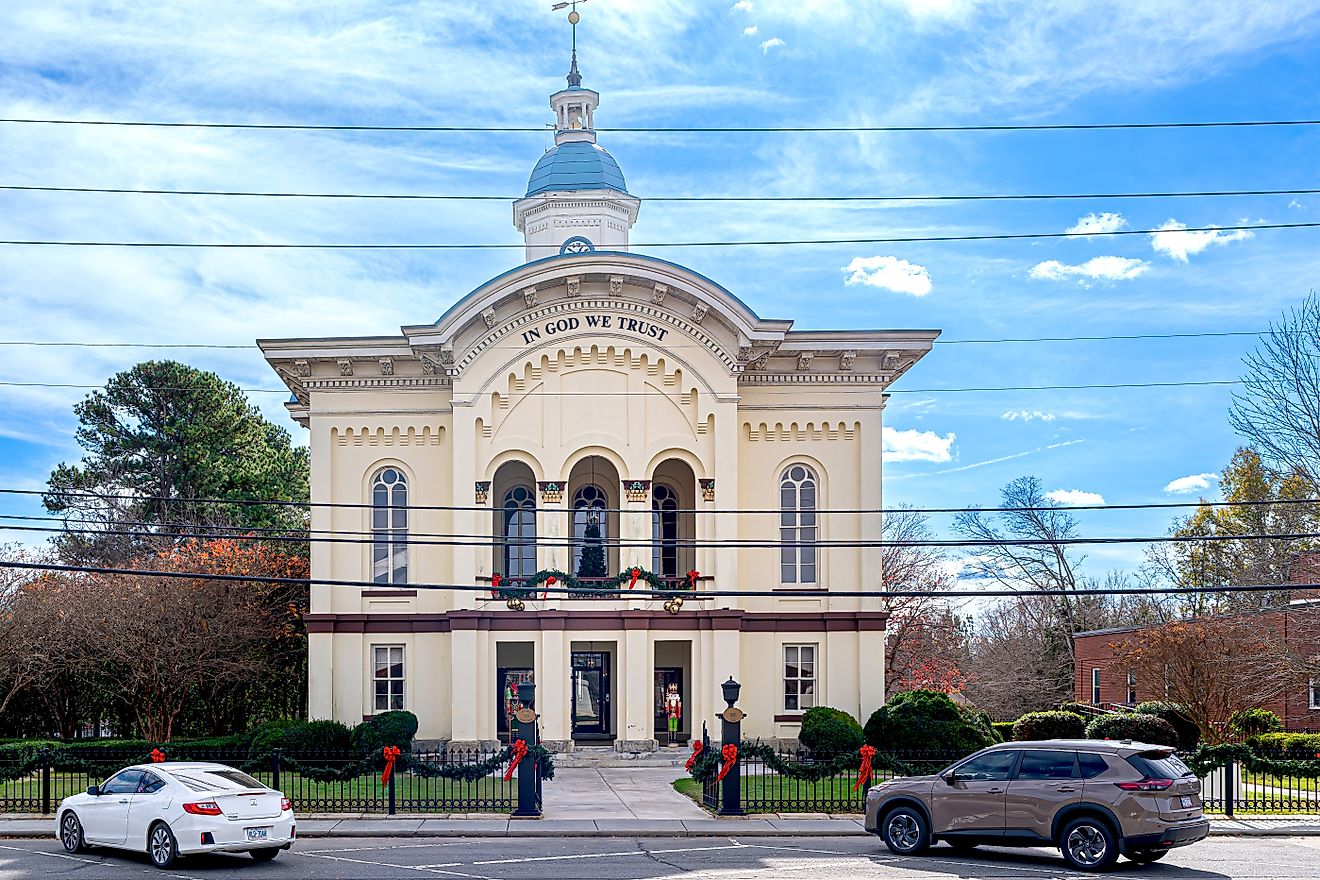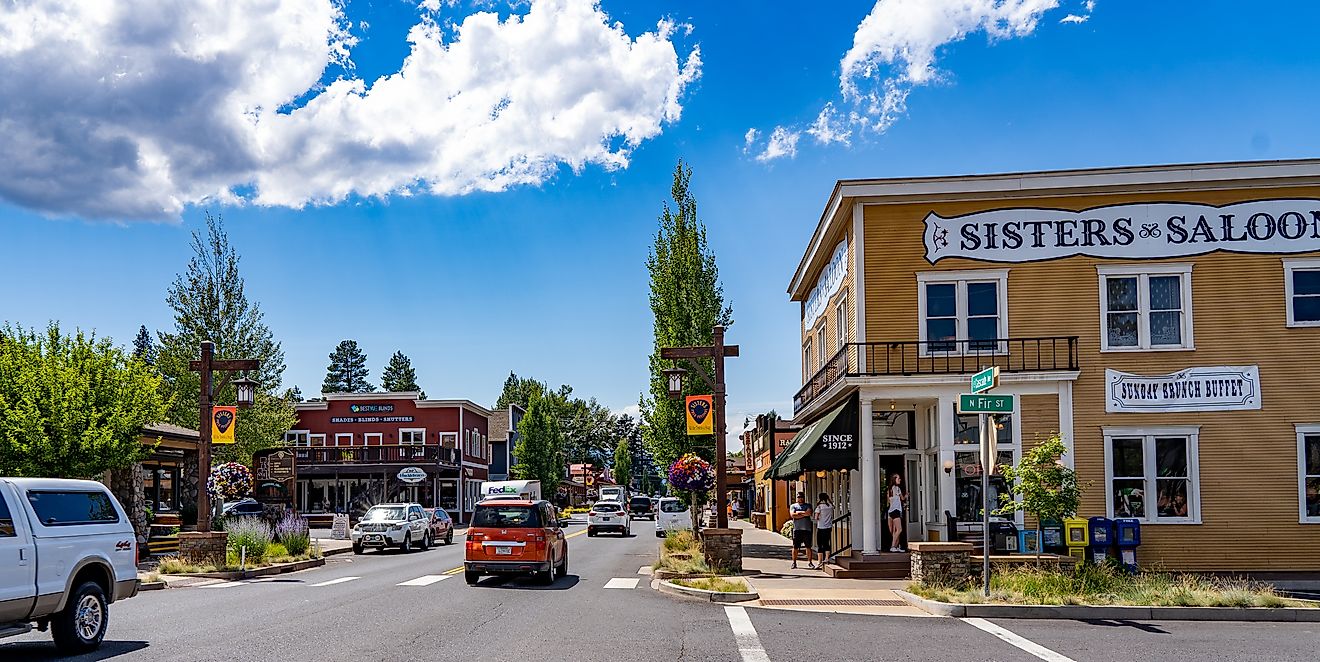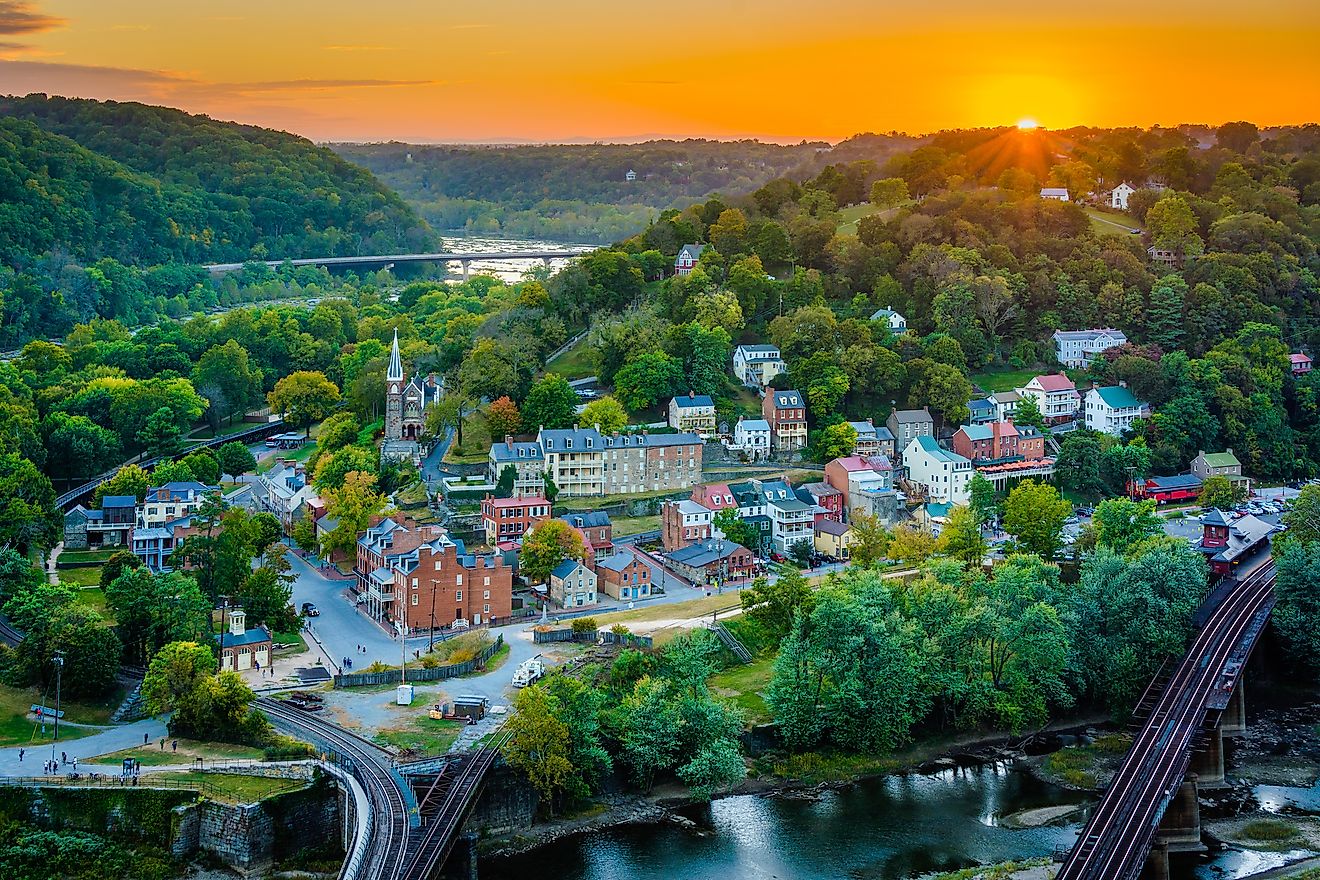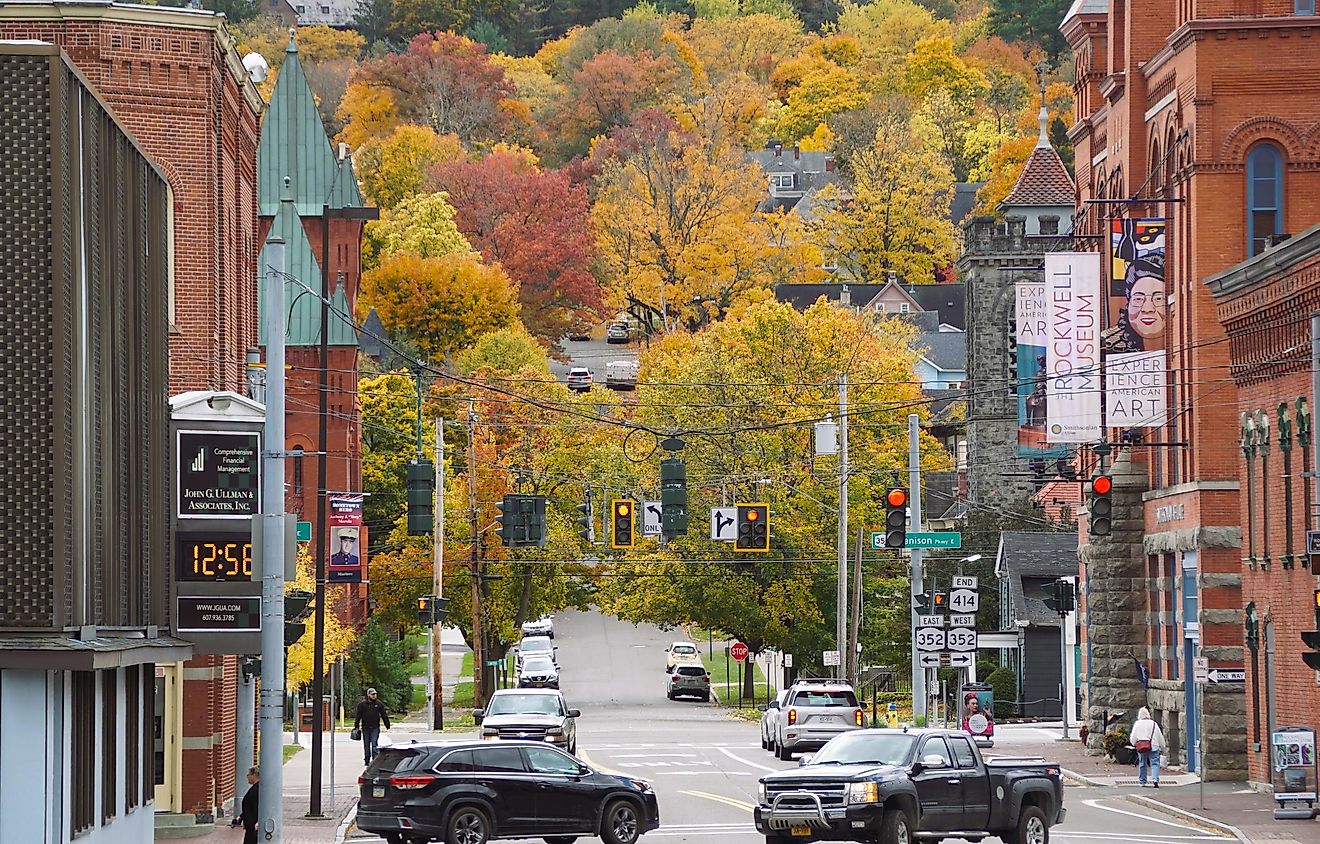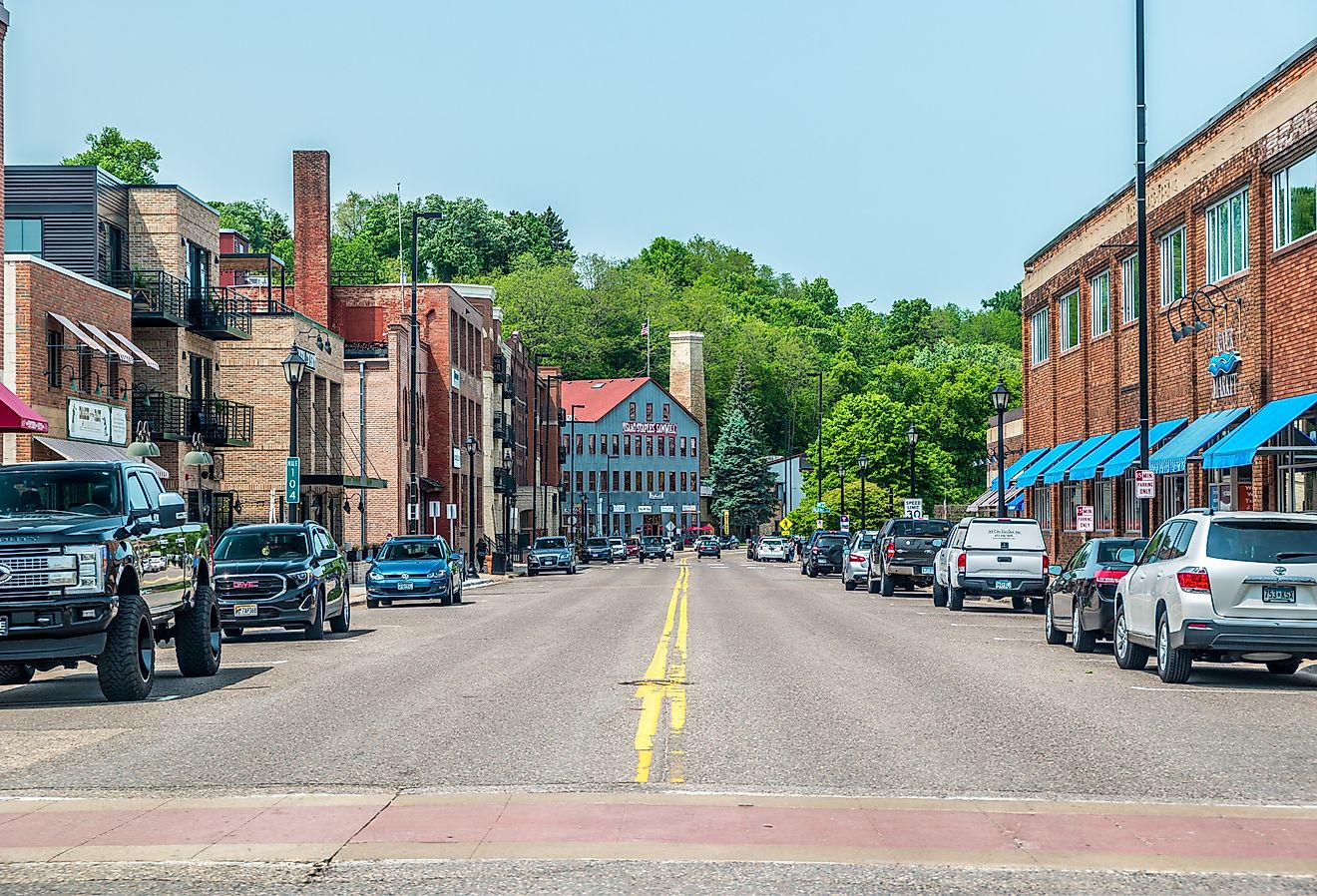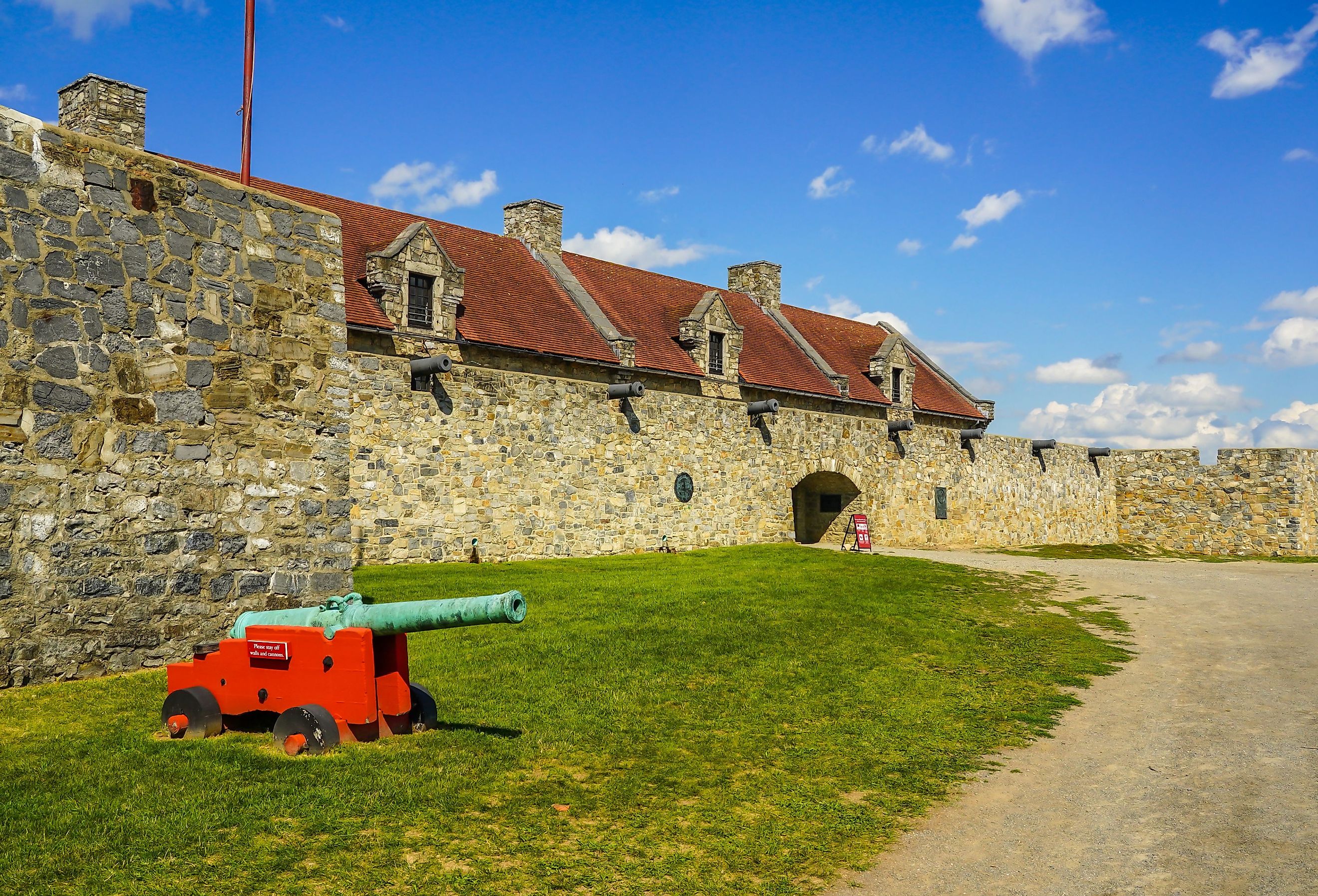
7 Towns in The Adirondack Mountains With Rich History
Located in upstate New York, the Adirondack Mountains feature various historic towns. This beautiful mountain range has over 100 peaks that cover approximately 5,000 square miles, and the Adirondacks name is derived from the Mohawk word “ha-de-ron-dah,” meaning "eaters of trees." What makes these mountains so unique is that the Adirondack Mountains continue to grow each year and are formed on a separate dome from the surrounding mountain ranges. Humans have lived in the region of the Adirondack Mountains since 7000 B.C. So, it is no surprise that tucked among the valleys are countless old towns and ghost towns with rich histories to visit in the Adirondack Mountains.
Wilmington
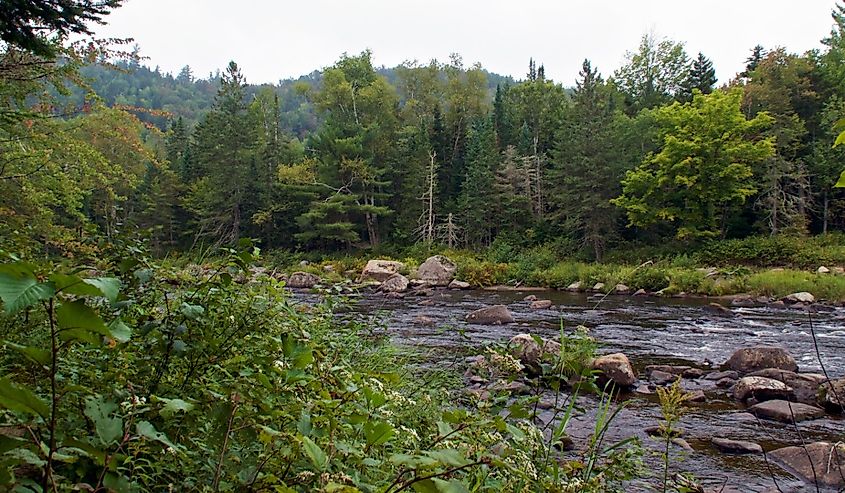
Wilmington helped shape the Adirondack region into what it is today. This town was long known for its history tied to the mining industry. The region was known for its iron ore deposits, and the first iron mine in the Adirondacks was established here in the early 19th century. To learn more about this town's unique mining history, visit the Adirondack Iron and Steel Company historic complex in Essex County. The town neighbors the infamous Whiteface Mountain, one of the highest peaks in the Adirondack region. The mountain has its history after hosting several Olympic events during the 1980 Winter Olympics.
Respect the fallen heroes by visiting the Veteran’s Memorial Corner, located at the outset of Whiteface Mountain Veterans' Memorial Highway; the plaque is dedicated to the veterans of all wars. The Whiteface Memorial Highway was built to honor the veterans who served in all the wars America has participated in.
Keeseville
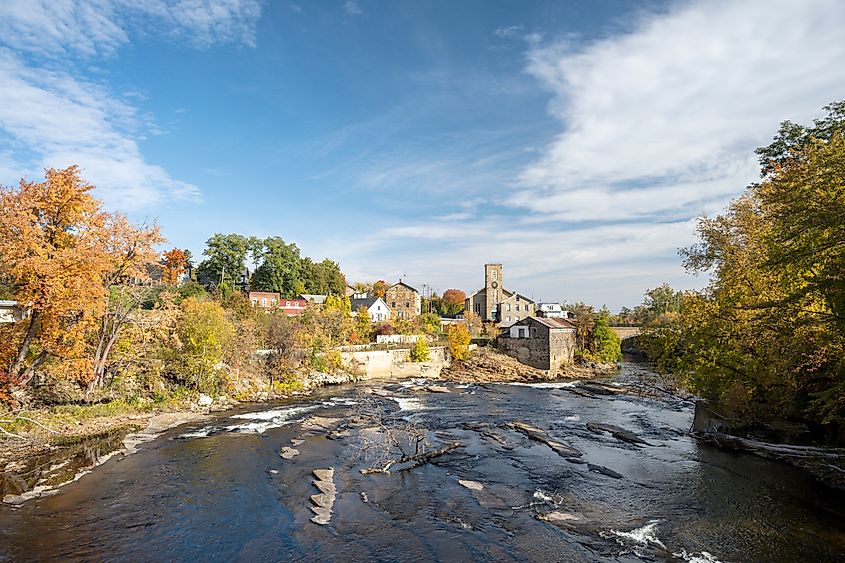
Keeseville is settled in the northeast corner of New York state. The historic town of Keeseville is divided due to the flowing rapids of the Ausable River. A unique fact about the town is that it is located in two counties (Essex and Clinton), separated by a river. The town was also known for its famous mineral springs, which can still be visited today at the Mineral Spring historic plaque located in Keeseville. The water was believed to have medicinal properties and was highly sought after by many wealthy individuals in the country. The town was also known for having the First Baptist Church, the oldest existing religious body in Champlain Valley. The church was founded in 1788 and can still be visited today.
The town is also home to a beautiful historic district with 142 structures that still exist today. Take a journey back in time when visiting the district along with the boutiques, cafes, and restaurants that occupy the historic buildings.
Ticonderoga
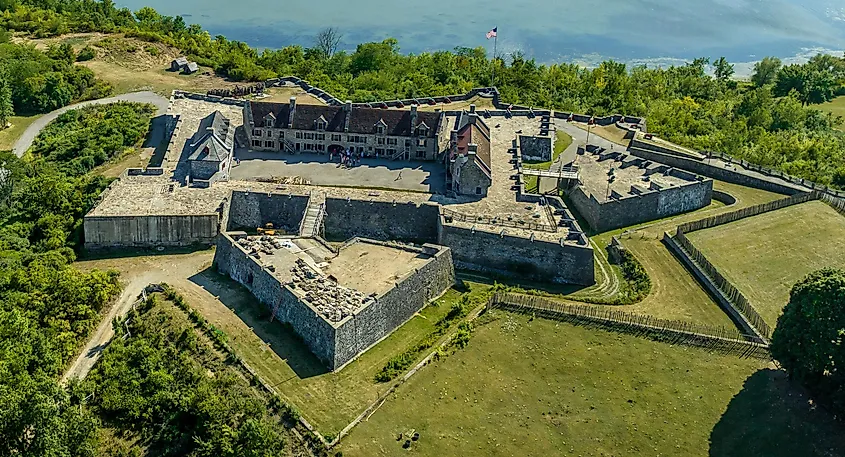
This historical town was formed in 1804, although it has been populated since the early 16th century. The town is primarily well-known due to Fort Ticonderoga, which was the site of many battles during the American Revolutionary War. Today, Fort Ticonderoga is a museum that displays well-preserved structures, historical exhibits, and beautiful gardens, providing a look into the region's significant role in shaping American history. One of Ticonderoga’s best features is Mount Defiance, looming above Fort Ticonderoga and the town itself. Mount Defiance stands 260 meters tall. A hike to the top of the mountain rewards visitors with breathtaking views of Lake Champlain and the surrounding area.
To truly understand the region’s fascinating history, a visit to the Ticonderoga Heritage Museum is required. The museum allows visitors to learn about the town's history by displaying local artifacts, exhibits, and interactive displays. It highlights Ticonderoga’s history, from its early Native American residents to today. When visiting, tourists will be left with plenty of knowledge of the region’s fascinating history.
Lake George
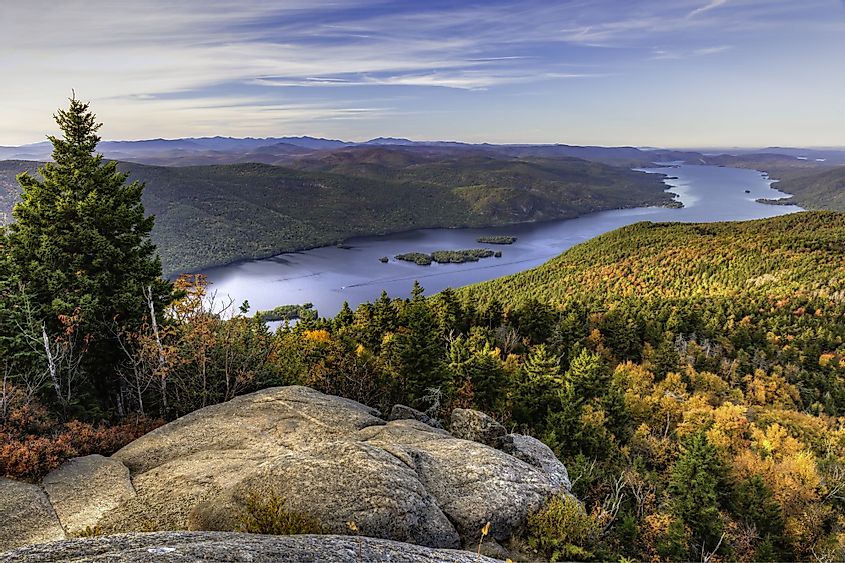
Placed at the base of the Adirondack Mountains, Lake George is a beautiful town that leaves lasting impressions on those who visit due to its breathtaking scenery. The town also has enough local, national, and international history to keep those visiting entertained for days. Visitors can step back in time when they visit Fort William Henry. Sitting at the southern end of Lake George, this interactive museum allows visitors to experience what life in a British fort was all about!
This town is not just known for its fascinating history; it has long been a popular vacation spot during the summer months. The beautiful 32-mile-long lake is home to the well-known “Million-Dollar Beach,” one of the best beaches in the state. After a refreshing swim in the lake, visit the Shelving Rock Area. Shelving Rock has hiking trails and the ruins of old estates, providing a peek into the history of the region's early vacationing elite. The hiking trail leads to a scenic overlook of Lake George, so make sure to bring a camera!
Lake Placid
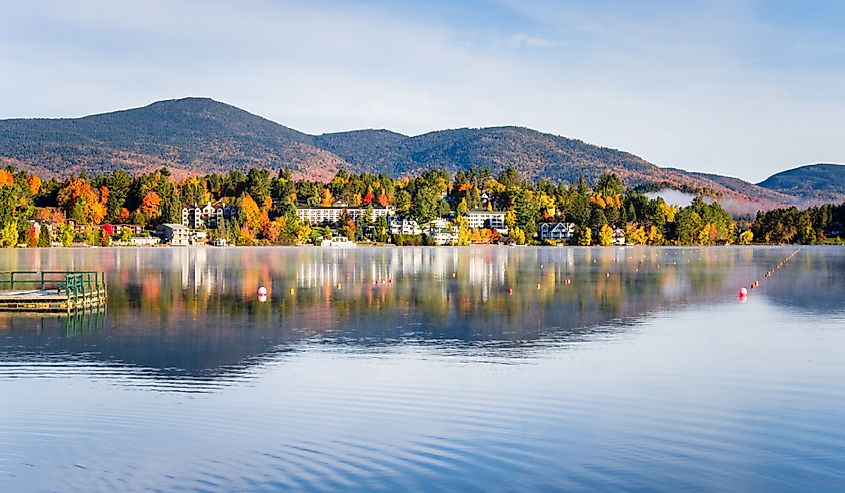
Playing host to the Winter Olympics in both 1932 and 1980, Lake Placid became the first North American location to host the Winter Olympics in 1932. The 1980 Winter Olympics were also held in Lake Placid, marking the second time the town hosted the prestigious event. Today, the Olympic venues are still used year-round, and the public is invited to visit these historic facilities as well. Another must-stop destination in Lake Placid is the Wild Center. This natural history museum will allow visitors to view wildlife, walk through the forest, and canoe down scenic rivers while learning about the region’s natural history.
Look into Lake Placid’s history by visiting the Whiteface Inn, built in the early 20th century, which is another historic structure that reflects the region's resort history. Lake Placid was also well known as a health resort. The crisp mountain air and natural surroundings attracted visitors seeking a healthful retreat. It is still a popular destination as those who believe in the healing properties of the region often spend their time on the peaks of the nearby mountains, such as High Falls Gorge.
North Creek
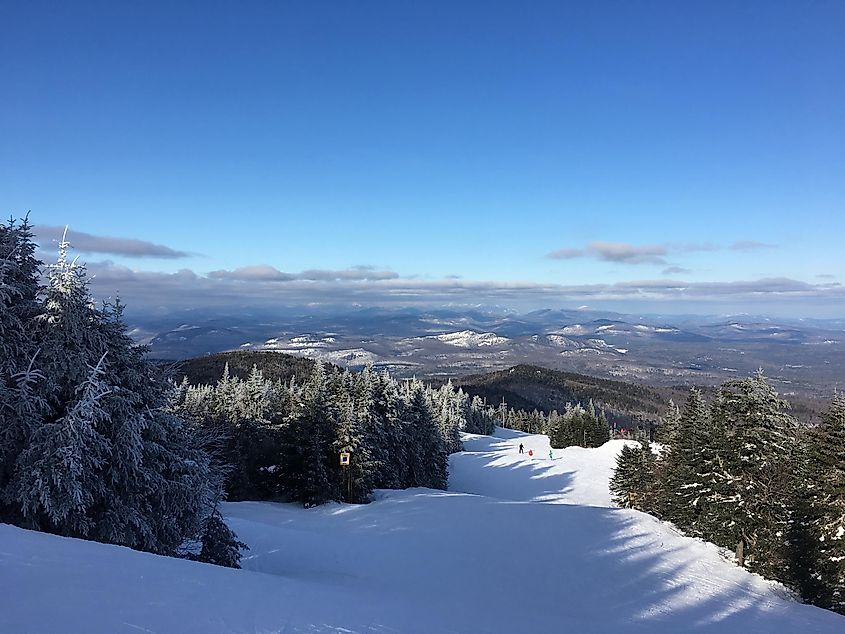
Located below the state's largest mountain ranges, North Creek is a place where Aboriginal communities once flourished and early settlers began to inhabit in the late 18th century. It was founded in 1901 and was a prominent town for the logging industry. The town was the first station along the famous Adirondack railway, the first railway through the mountain range. Visitors can visit the historic North Creek Train Depot, this museum provides visitors with insights into the town's history, particularly its connection to the Adirondack Railway. The most prominent landmark is still the Gore Mountain Ski Lodge, the oldest Ski resort in New York. After making your way to the North Creek, today you'll find the Tannery Pond Community Center, which hosts arts and cultural events. Garnet Mine Tours is a prominent attraction that showcases the region’s mining history while allowing visitors to tour actual mineshafts. Whether spring, summer, fall, or winter, there are always reasons to visit and stay in the North Creek area.
Newcomb

This beautiful small town is sheltered in the heart of the Adirondack Mountains. While it may be relatively unknown to many, this little town has a rich history filled with numerous significant events that have shaped the region and impacted the area. On the outskirts of Newcomb is the Tahawus Mine, which was one of the most important mining operations in the Adirondacks. The mine can still be visited today, and tours are given daily. Also situated in Newcomb was the Tahawus Club, founded in 1869. This club was a private retreat for wealthy industrialists and their families. It attracted prominent figures, including Theodore Roosevelt and J.P. Morgan. The historical marker can be visited today to see where some of America’s most prominent figures met.
For a more eerie experience, visit the former town of Upper Works. The Ghost Town was founded in the late 1800s as a logging and mining town; however, its fortunes deteriorated, and it was abandoned in the early 1900s. Today, visitors can explore the town's ruins and learn about the people who used to live and work there. Newcomb might be a small town, but it has played a significant role in developing the Adirondack Mountains.
These seven historical towns played an essential role in shaping the region’s history and helped shape the nation’s history. The beautiful scenic views of the Adirondack Mountain range have long been admired by those who visit. Attracting settlers, America’s elites, and now modern-day tourists, it is easy to understand why people choose the Adirondacks as a must-stop destination. These historic towns help contribute to the allure of the beautiful mountain range, so be sure to pack a camera as these towns have some gorgeous, must-see attractions in addition to their rich and unique histories.
